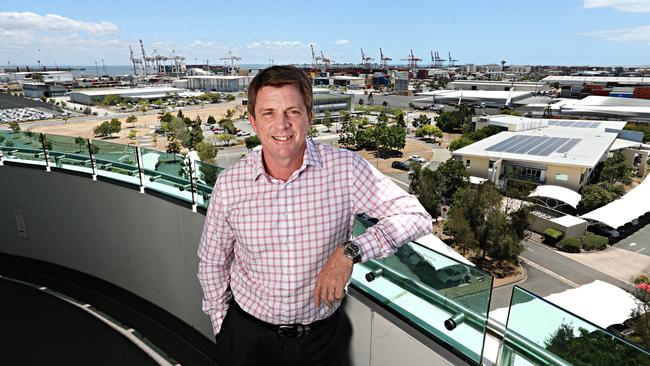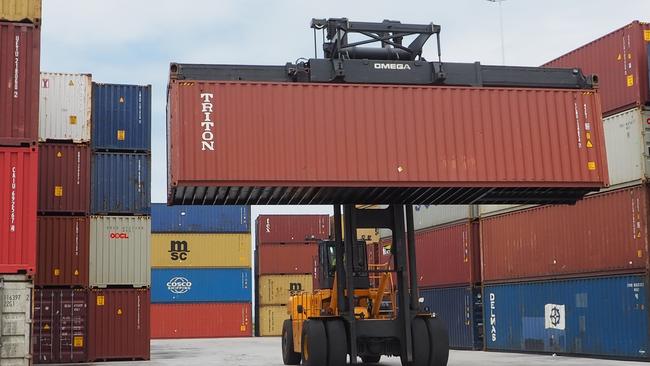Port of Brisbane hits the fast lane
The Port of Brisbane is Australia’s third busiest port and is fast emerging as one of the country’s great logistics and industrial hubs.
QLD Business
Don't miss out on the headlines from QLD Business. Followed categories will be added to My News.
It is Australia’s third busiest port. The Port of Brisbane is fast emerging as one of the country’s great logistics/industrial hubs.
But David Keir, who has been the port’s general manager for property and sustainability since 2016, and in the property game for three decades, knows there’s plenty of competition around, despite having ... location, location, location.
“We’re very mindful that our customers have the opportunity to import and export their products through a variety of other ports. We are also very mindful that our customers have an opportunity to base themselves in Berrinba, Rochedale, Ipswich, Heathwood,” he says.
“So our offering has to be competitive. A lot of the projects we have secured over the last 12 months have been market briefs and we’ve had to compete against (industrial property giants) the Goodmans, Frasers, the GPTs and the Charter Halls.”
Keir says about 45 per cent of the port’s revenue is from property.
“Since I’ve joined I’ve been trying to convince them that we’re a property business,” Keir jokes.
“But we will always be a balance between the trade aspect and property.
“We are able through our sea lanes to deliver 4 million TEU (or standard shipping containers) a year.
“As trade grows in an import-export sense, we have capacity in our wharf infrastructure to accommodate that and we have capacity in our land size to accommodate that increase in activity.”
It has only been since the 1970s that the Port of Brisbane as it’s known today started taking shape.

The then state government began the process of linking up the sand islands that made up Fisherman Island and took the first steps to create a world-class deepwater facility.
Privatised in 2010, and armed with a 99-year lease from the State Government, the port now handles about 1.4 million TEU a year and about $50 billion of goods from around the world pass through it.
While the port itself continues to reach milestones, it is the combination of available land and location that draws companies to the precinct. The Port of Brisbane controls about 1883ha, of which about 1000ha is green space and transport corridors.
That leaves about 800ha available to be developed across five precincts: Port of Brisbane, Port Central, Port Gate, Port North and Port West. About 550ha has been developed, becoming warehousing and head offices for dozens of businesses, including Bunnings, Autocare, Silk Logistics and Queensland Glass.
It offers “end-to-end solutions” by designing, delivering and managing the leased facility.
Keir says about 50ha of land has been taken by business over the past two years and there remains about 20ha left of developable land.
But there is still plenty of land on the horizon with a 230ha reclamation project in the port precinct. It is one of the largest endeavours of its kind in the world, bigger even than the famed Palm Islands in Dubai.
Keir says reclaimed land will be made available progressively over the 30-year time frame of the project, if not earlier.
“We’re here for another 90-odd years and we’re going to be sensible in our approach,” he says.

“Primarily we want to get the message out there that there is still land available. We have that capacity and deliver that customer-driven outcome and give them the product that they’re looking for.”
Keir, who in the past had run major residential development companies Devine Ltd and Delfin Lendlease, said the basic fundamentals of the property game were the same across all sectors.
“What we do here is not dissimilar to what we used to do in residential. It’s about understanding what the customer’s needs are and you design a product to suit their requirements,” he says.
“A big part about my history in this development game is about repeat customers. When I was with Delfin, 40 per cent of the transactions we did nationally were repeat customers.
“Industrial is a different asset class but, at the end of the day, it’s you building a relationship with the customer.”


